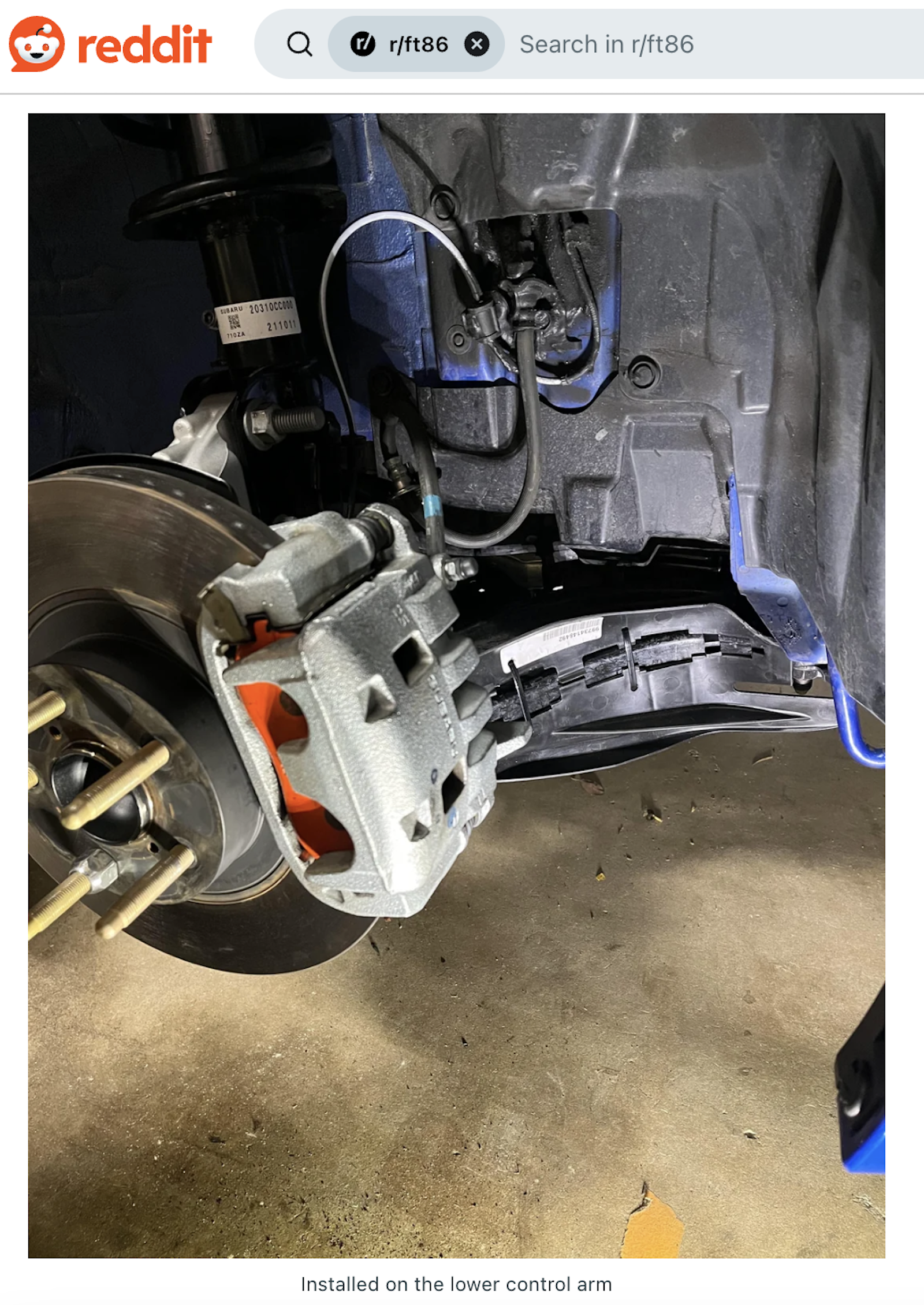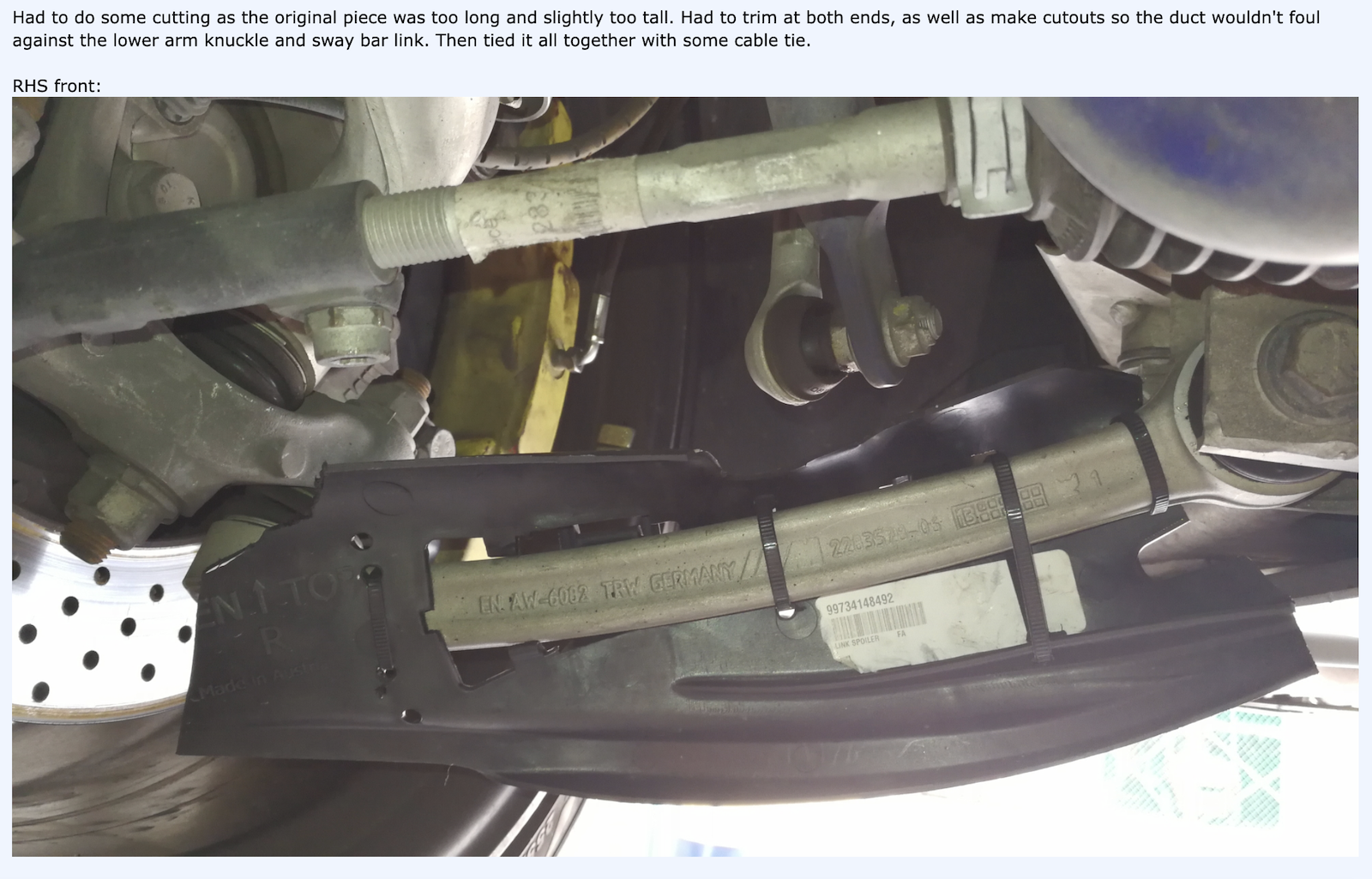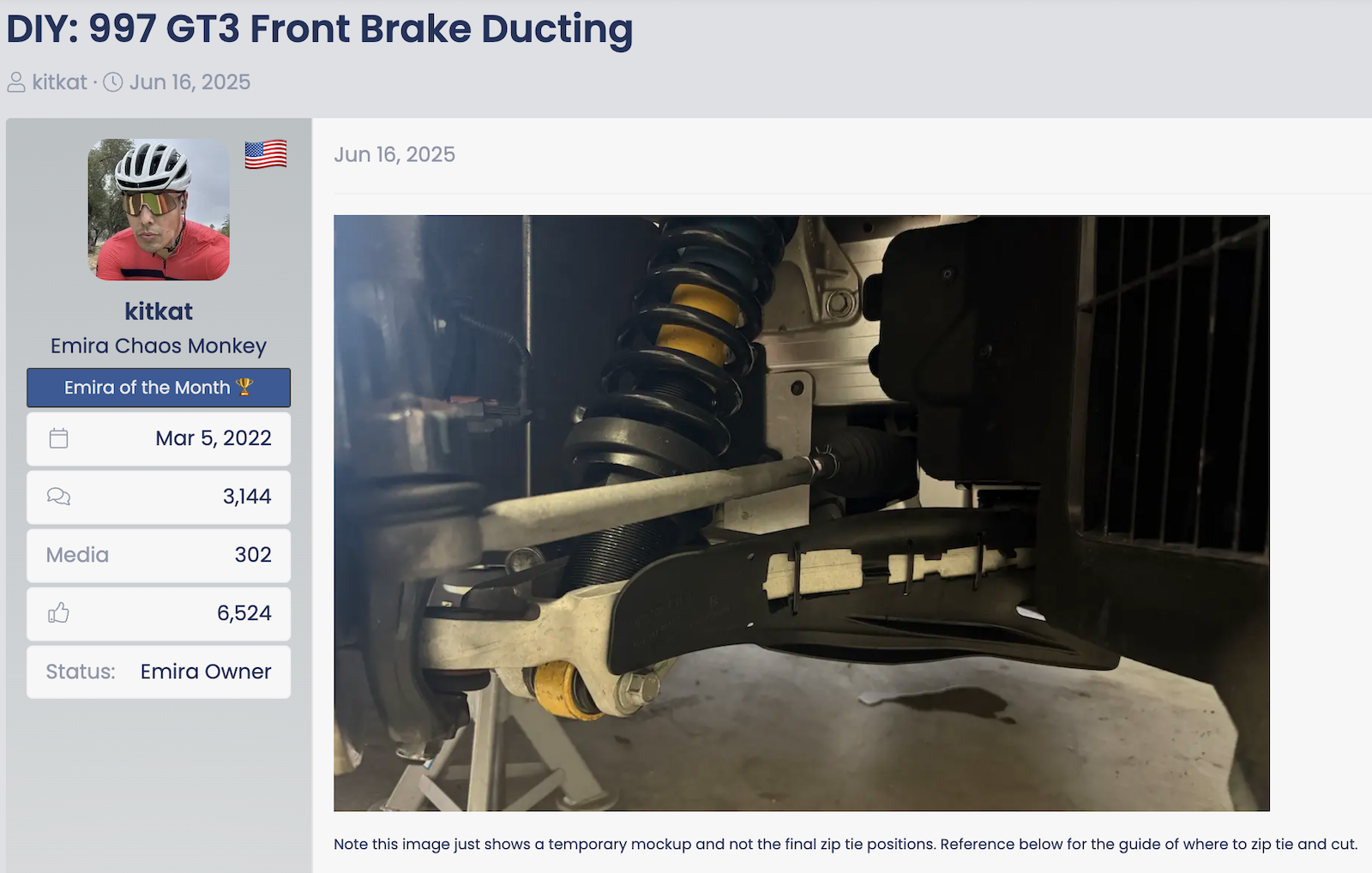There’s no greater thrill than driving on a closed course, being able to properly experience speed without worrying about breaking the law or not having enough runoff. Track days are some of the most fun you can have in a car, but they are hard on brakes. However, before you go out and splash the cash on a big brake kit, you might want to look into a pair of shockingly inexpensive Porsche 911 GT3 parts.
With a conventional braking system, you’re turning kinetic energy into heat every time you hit the brake pedal. Unsurprisingly, the hard braking zones on racetracks generate tons of heat, and brake discs can only absorb so much without adequate cooling. Get your brakes too hot and you can boil the fluid or glaze the brake pads, reducing the effectiveness of your brakes. When you’re travelling at triple-digit speeds down a straightaway on a closed course, you’re gonna want some stopping power. These days, most discs are ventilated, meaning they have air channels inside of them that increase their effective cooling surface area, but how well those channels work depends a lot on how air’s guided to them.
Or, you could just order Porsche part numbers 99734148392 and 99734148492, the left and right brake ducts for a 2007 to 2008 Porsche 911 GT3. While this might sound hideously expensive, you’d likely be surprised at just how inexpensive these pieces are. A set of left and right ducts from FCP Euro will run you $67.26. That’s less than $70 for a pair of genuine Porsche brake ducts.

Just like its 996 predecessor, the 997 Porsche 911 used MacPherson strut front suspension with an unusual lower control arm setup. The main control arm ran perpendicular to the direction of travel, while a trailing arm of sorts ran diagonally from the tub to a mounting point on the lower control arm. The GT3 brake ducts are just big plastic scoops that clip onto these trailing arms and with a little bit of modification, they can likely be made to fit your independent front suspension too.

Indeed, the prevalent method of making these things fit is to snip or Dremel off what needs to be ditched, then simply zip tie them to the leading edges of your lower control arms, making sure they’re aimed to send air to your hubs. For reference, here’s a set of cut-up GT3 brake ducts on a Subaru BRZ, as posted to the FT86 subreddit. Although it might seem a little janky at first glance, flimsy little clips were good enough for Porsche so cable ties should be good enough for everyone else. Plus, these ducts are a huge upgrade if your car didn’t come from the factory with any brake ducting.
Do they still work when hacked up? You bet your bottom dollar they do. One GR86 owner by the YouTube username Track and Build fitted a GT3 brake duct to one front corner of their car and left the other alone, then went out to get the discs hot. The result? While the side without any brake cooling duct measured 156.5 degrees Celsius, the side with the duct clocked in at 118.9 degrees Celsius. That’s a temperature reduction of 37.6 degrees Celsius, or 24 percent. Can that be the difference between happy brakes and unhappy brakes? Absolutely.

Oh, and because these ducts are sort of trim-to-fit, you can put them on far more cars than just Porsches and Toyobaru twins. One poster on M3post.com fitted a set of these ducts to their E9x M3, the V8-powered one. As the forum member wrote, “Had to do some cutting as the original piece was too long and slightly too tall. Had to trim at both ends, as well as make cutouts so the duct wouldn’t foul against the lower arm knuckle and sway bar link. Then tied it all together with some cable tie.” Easy-peasy. As for whether they worked, the poster followed up with:
Trackday over and the ducts performed admirably! Stayed attached after several 200+kph runs down the front straight of Sepang F1 Circuit. They also helped a lot in preventing fade. I usually start to experience brake fade after the 3rd session, but I ran 5 sessions today and no fade. Would love to hear from the other trackies if they have pyro data on these ducts.
That’s a huge win for such little spend. The first rule of trackdays is to be safe, and the better your brakes are at staying in their window of optimal operating temperature, the safer you’ll be out on track.

Actually, another good testimonial about how effective these brake cooling ducts are is how people are installing them on pricier cars. Yep, that’s a GT3 duct on a Lotus Emira. User kitkat on emiraforum.com has even provided a handy template for owners looking for extra brake cooling on their boutique British sports cars.
Sure, these ducts used to be even cheaper, but they’re still a downright sensibly-priced way of improving brake cooling on all sorts of cars. So, if you find yourself getting addicted to the rush of performance driving, why not spend less than $70 on a pair of GT3 brake ducts? If they’re the difference between brake fade and no brake fade, they’ll quickly pay for themselves in added seat time alone.
Top graphic images: FCP Euro; YouTube/Track and Build; Subaru









” 156.5 degrees Celsius, the side with the duct clocked in at 118.9 degrees Celsius. That’s a temperature reduction of 37.6 degrees Celsius, or 24 percent. ”
Hmm, allow me to let my pedantry loose for a minute.
The degree Celsius isn’t an absolute unit of temperature, the Kelvin is. So the brakes went from 156.15+273.15K to 118.9+273.15K, an overall reduction of 8.9%.
It’s still impressive though!
What’s that in Fahrenheit?
Rankin would be the equivalent scale in the Fahrenheit world. Those Celsius temperatures convert to 773.37 Rankin and 705.69 Rankin. Since Rankin is also an absolute unit of temperature, the percent decrease is the same 8.9%.
Thank you. I had just calculated the exact same values in excel when I scrolled down to your comment.
These ducts are also on the Turbo and C4S trim levels, including my 996 C4S.
“Although it might seem a little janky at first glance, flimsy little clips were good enough for Porsche”
From experience when replacing my control arms, those clips aren’t janky. They clip onto the control arm very tightly, and it actually took a lot of careful force to get them off and back on without breaking them.
How appropriate. Using speed tape.
I put one on the driver’s side on my 135i so I can test the difference (left vs right) on the Dragon this coming weekend. I’ll report back next week.
Of course I would read about this 1 week after I sell my BRZ. Oh well, maybe the next owner will read it.
I put these on my MK7 GTI, then went to the Audi RS3 ones after I broke the FR one with a cone at autocross. The RS3 ducts were a direct bolt on to my GTI since it is the same lower arm
I’m glad people are still doing this. I added 993 brake scoops to my Focus back around 2007/8 and I think we ran some on our LeMons racevan for a bit as well.
Why is the left side more expensive than the right side?
I wonder if the left ones end up getting damaged more often than the right ones, possibly on sausage curbs or (more likely) gravel traps during track days? The majority of 911s are LHD, and aren’t a majority of tracks counterclockwise?
I find this very hard to believe. Factory parts from Porsche for 70 bucks? Inconceivable!
2 years ago they were literally $6.80/ea at FCP. Secret’s out now!
Man, that looks like a lot of plastic for $6.80, let alone being a Porsche part!
I don’t understand why any of these cars wouldn’t have this already from the factory
Priorities. Regular brakes are probably good enough and hit the intended performance metrics without any ducting, so use that time for a whole bunch of other things that need to be taken care of. Its these small things that is where a lot of the time goes when developing higher performance trim levels. Its a $10k bump in price over a lower trim level – only $2k worth of actual parts, but $8k worth of engineering time.
Additional moulds or tooling for lower volume trims can be indeed very expensive. Sometimes the OEM also adds some healthy profit on top:)
Installing another part on the assembly line also adds time and work, which is very expensive. Every nut and bolt adds not-insignificant cost.
It adds drag and probably reduces mileage by .1 mpg or something.
Every part costs money to design. Injection molded parts are incredibly expensive up front due to the cost of tooling, and only get cheap per unit at massive scale. On the flip side, most of these vehicles have no need for cooling ducts.
So you save money on engineering them, you save money not manufacturing them, you save money not installing them at the assembly plant, and an incredibly tiny percentage of customers might notice they aren’t there.
Because manufacturers know that almost no production cars will ever get taken on a track, and you don’t need brake cooling for normal road driving.
The few people that do track their cars, are already expecting to have to spend some money to get their car ‘track ready’.
Even with something like the GR86, which is marketed on it’s handling, (and there’s plenty of promo shots of them going around race tracks), Toyota know that 90%+ of the owners will never take them to a track day.
So why bother adding (and designing,and manufacturing) a part that’s only useful on track days, when the majority of your buyers won’t care?
GRM 3d printed a set of these for their GTI and got measurable results. I modified the design to work on our CRX Lemons car. Sadly, we’ve not been able to try them yet.
https://www.thingiverse.com/thing:4700013